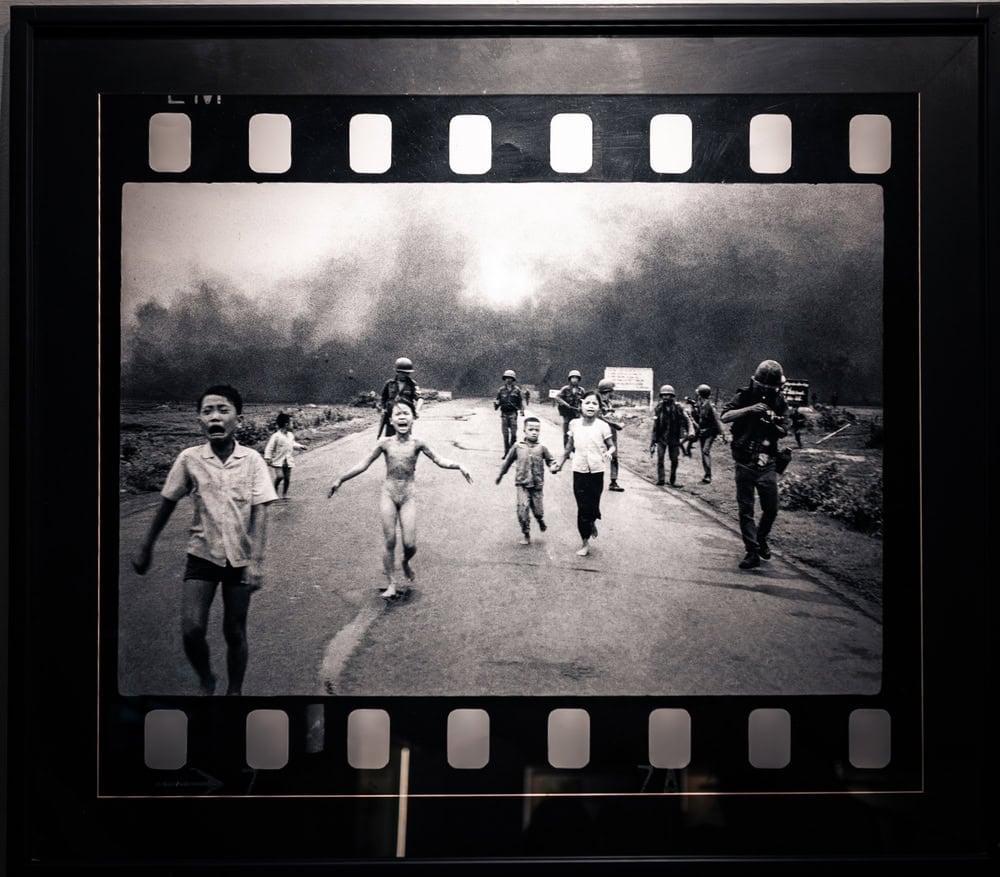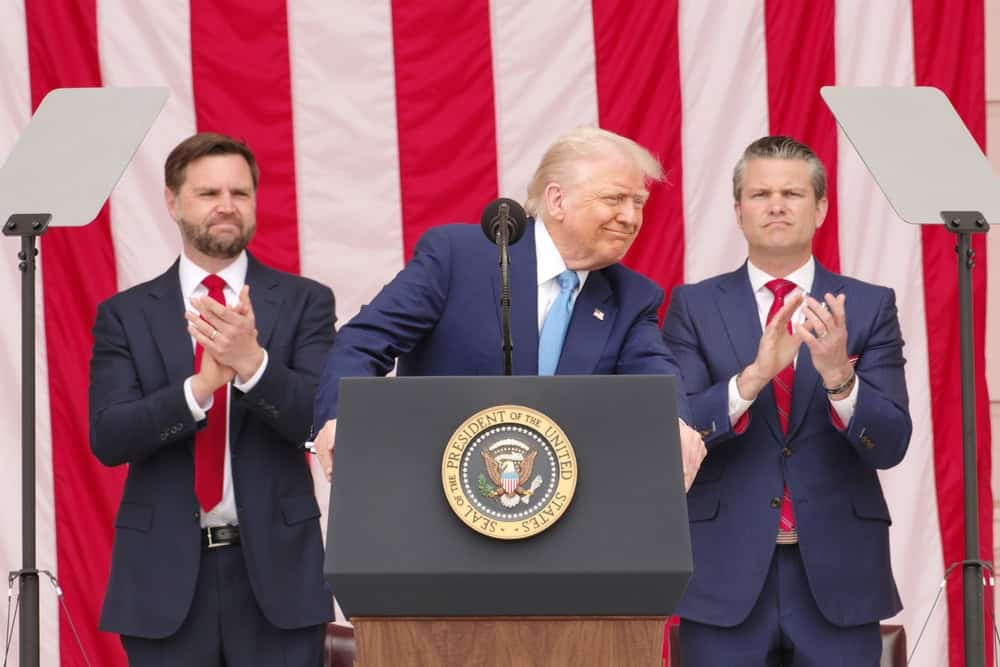No Vote, No Debate, Just Bombs: Trump’s Iran Strike and the Slow Costly Death of Congressional War Powers
Since its founding, the United States has engaged in numerous military conflicts, yet only five have ever received formal declarations of war by Congress. Despite the constitutional requirement that Congress declare war, nearly every major conflict since World War II—including Korea, Vietnam, Iraq, and Afghanistan—has bypassed this step. These so-called “undeclared wars” often coincide with what many now consider America’s “lost wars”: drawn-out, expensive, and politically divisive campaigns that ended without decisive victory or clear success.
So why has the U.S. shifted from declared wars to a steady stream of undeclared ones—and what has it cost us?

A Nation Founded on War—But Rarely Declaring It
The U.S. Constitution grants Congress the sole authority to declare war, a safeguard intended to ensure public debate and accountability before committing the nation to conflict (ArtI.S8.C11.1). But in practice, this power has rarely been used. The United States has only declared war five times: against Britain (War of 1812), Mexico (1846), Spain (1898), Germany and Austria-Hungary (World War I), and the Axis powers (World War II) (Library of Congress, 2023).
“The Congress shall have Power… To declare War, grant Letters of Marque and Reprisal, and make Rules concerning Captures on Land and Water;”
— U.S. Constitution, Article I, Section 8, Clause 11
Yet these are just a fraction of America’s military engagements. From the early 19th century onward, the U.S. has routinely used military force without declarations—engaging in dozens of conflicts that range from brief interventions to decades-long occupations (Congressional Research Service, 2021).
The Quasi-War and Barbary Conflicts: Early Exceptions Become a Pattern
As early as 1798, the U.S. found itself in a shooting war with France, the Quasi-War, without ever declaring it. Naval skirmishes escalated over the course of two years, conducted under congressional authorization for force but not a formal declaration (Office of the Historian, n.d.-a). Shortly afterward, the Barbary Wars against North African pirates in the early 1800s continued this trend, as U.S. forces launched attacks without any official war designation (Office of the Historian, n.d.-b).
This set a precedent: military actions could be authorized through funding bills, resolutions, or presidential orders, sidestepping a formal declaration while still waging war.
The Cold War and the Rise of the Undeclared Forever War
The Cold War era entrenched this approach. The Korean War (1950–1953) was launched under the auspices of the United Nations and labeled a “police action” by President Truman, avoiding a declaration while involving hundreds of thousands of U.S. troops (Fisher, 2017). Though the war ended in a stalemate, it marked the beginning of a new model: limited conflicts, often framed as part of a broader ideological struggle, justified through executive power and international alliances rather than a clear congressional mandate.
Vietnam deepened the pattern. While the 1964 Gulf of Tonkin Resolution gave President Lyndon B. Johnson sweeping authority to escalate military operations, Congress never formally declared war. Over 58,000 Americans died in a war whose goals were constantly shifting and whose conclusion—withdrawal and the eventual fall of Saigon—left the U.S. reeling and deeply divided (Appy, 2006).

The list of undeclared Cold War-era interventions is long: Lebanon, Cuba, the Dominican Republic, Grenada, Panama, and El Salvador, among others. Many of these were covert or brief, but they reinforced a system where war could be waged without war ever being declared.
The War on Terror: Two Decades, No Declaration
In the wake of 9/11, Congress passed the Authorization for Use of Military Force (AUMF), giving the president broad authority to target those responsible for the attacks (Public Law 107–40, 2001). This resolution became the legal backbone for the U.S. invasion of Afghanistan in 2001 and later, the 2003 invasion of Iraq. Neither were declared wars, though both involved full-scale combat operations and long-term occupations.
Afghanistan became America’s longest war, lasting nearly 20 years and costing over $2 trillion (Brown University, 2021). Its ending—in 2021, with the Taliban quickly retaking the country—was widely seen as a failure of both military strategy and political will. Iraq, meanwhile, spiraled into insurgency and chaos after initial “victory,” and remains a symbol of flawed intelligence and mission creep (Ricks, 2006).
Both wars were authorized, but never declared—and both are often cited as examples of America’s modern “lost wars.”
What’s Lost in an Undeclared War?
The shift toward undeclared war has had profound consequences. Without formal declarations, wars often begin with less debate, less clarity, and less public understanding. Legal scholars argue that relying on resolutions and executive action undermines constitutional checks and balances, concentrating too much power in the presidency (Yoo, 2006).

Strategically, the lack of clear goals has led to “mission creep”—open-ended engagements with shifting objectives and no benchmarks for success. This makes it harder to end wars, measure outcomes, or hold policymakers accountable.
There’s also a democratic cost: the American public is often disengaged or unclear on what, exactly, the nation is fighting for. When wars are undeclared, they’re easier to start—and harder to stop.
Can America Reclaim Clarity and Accountability?
Some constitutional scholars and military analysts argue for a return to formal declarations or, at the very least, tighter legal constraints on executive military action. The War Powers Resolution of 1973 was intended to curb presidential overreach, requiring notification and limited engagement without congressional approval—but in practice, presidents have often sidestepped or ignored it (Elsea & Weed, 2014).
To avoid future “lost wars,” experts urge that Congress reclaim its constitutional role—demanding specific goals, exit strategies, and public debate before military action begins. Formal declarations may not be politically convenient, but they force a level of deliberation and transparency that America’s post-WWII conflicts have sorely lacked.
Conclusion: Undeclared, Unfinished, and Unaccountable
From Korea to Iraq, America’s most protracted and divisive wars have often been undeclared—authorized through loopholes and framed in euphemisms, but fought with real blood and treasure. These “lost wars” reflect not just military missteps, but a deeper erosion of democratic oversight and strategic clarity.
The United States may never return to the 18th-century model of declared wars. But if it continues down the path of undeclared conflict without constraint, it risks repeating history—conflict after conflict, victory elusive, and accountability absent.
References
Appy, C. G. (2006). Vietnam: The definitive oral history told from all sides. Viking.
Brown University. (2021). Costs of War: U.S. Costs to Date for the War in Afghanistan, 2001–2021. Watson Institute for International and Public Affairs. https://watson.brown.edu/costsofwar
Congressional Research Service. (2021). Instances of Use of United States Armed Forces Abroad, 1798–2021 (R42738). https://sgp.fas.org/crs/natsec/R42738.pdf
Elsea, J. K., & Weed, M. C. (2014). Declarations of War and Authorizations for the Use of Military Force: Historical Background and Legal Implications. Congressional Research Service. https://sgp.fas.org/crs/natsec/RL31133.pdf
Fisher, L. (2017). The law: Deciding on war against Iraq: Institutional failures. Presidential Studies Quarterly, 43(1), 176–192.
Library of Congress. (2023). Declarations of War by the United States. https://www.loc.gov/item/2021667578/
Office of the Historian. (n.d.-a). The Quasi-War with France, 1798–1800. U.S. Department of State. https://history.state.gov/milestones/1784-1800/quasi-war
Office of the Historian. (n.d.-b). Barbary Wars, 1801–1805 and 1815–1816. U.S. Department of State. https://history.state.gov/milestones/1801-1829/barbary-wars
Public Law 107–40. (2001). Authorization for Use of Military Force. https://www.congress.gov/107/plaws/publ40/PLAW-107publ40.pdf
Ricks, T. E. (2006). Fiasco: The American military adventure in Iraq. Penguin Press.
ArtI.S8.C11.1.
Yoo, J. (2006). The powers of war and peace: The constitution and foreign affairs after 9/11. University of Chicago Press.







